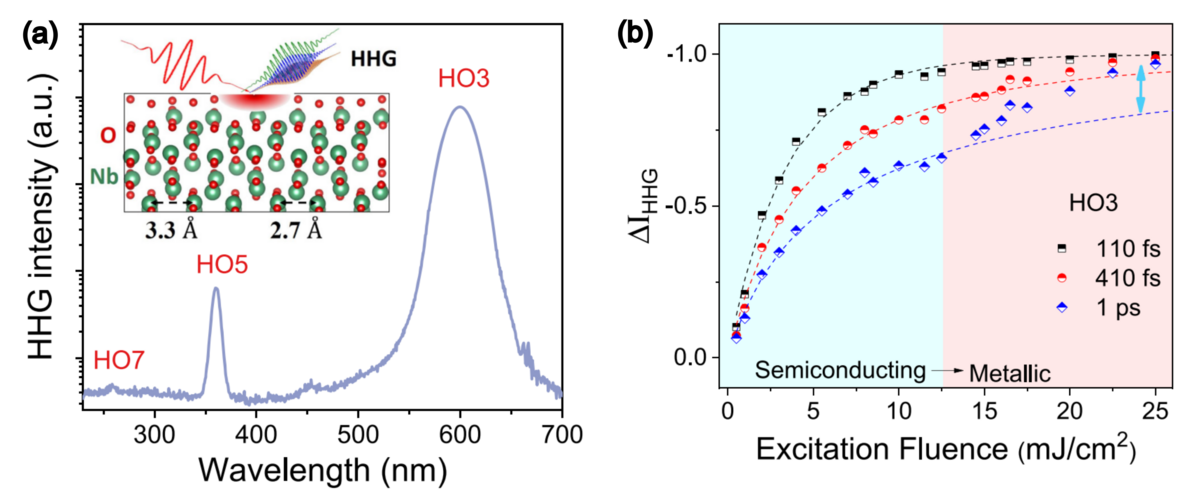An international team of researchers from ARCNL, Amsterdam and MBI Berlin, et al. have achieved a groundbreaking milestone, presenting evidence of a photoinduced insulator-to-metal transition (IMT) in a strongly correlated material. Leveraging transient high-harmonic spectroscopy, the team probed the ultrafast transition from the semiconducting to the metallic phases in polycrystalline thin-film NbO2. The team led by the High Harmonic Generation & EUV Science group of Peter Kraus at ARCNL has recently unraveled some of the mysteries of a so-called correlated material and found a way to manipulate its resistivity with light. This paves the way for opto-electronic ultrafast switching in future microelectronics. The study was recently published in Physical Review Letters.
In strongly correlated materials, the interaction of the electrons within the material leads to unexpected properties. Theory predicts strongly correlated oxides to be conductive, like metals. However, they actually behave like insulators most of the time. When heated above a material-speficic transition temperature, such materals undergo a phase transition and switch to being conductive. Such a transition can also be induced by a strong light pulse that results in electronic excitation which weakens the electron interaction inside the material. Even though the properties of strongly-correlated materials are not fully understood, their switching behavior makes them interesting for the semiconductor industry as oxide electronics could potentially reduce the energy consumption of the industry.
The current standard to study very small structures with light is to use a very short wavelength, i.e. smaller than the relevant dimensions in the sample. Such ultra-short wavelengths are obtained in a process called ‘high-harmonic generation’, a topic for which the Nobel Prize was awarded recently. In this process a light pulse with a longer wavelength is directed at a gaseous or solid target, where a nonlinear laser interaction leads to the generation of new laser frequencies that correspond to shorter wavelengths. These high harmonics can be further used for spectroscopy of carrier dynamics or nanostructures.
In their experiments, Z. Nie and coworkers used a pump laser pulse to induce the insulator-to-metal transition in a thin film of polycrystalline NbO2 and monitored the high harmonics generated by a long-wavelength probe laser pulse. The emission strength of the harmonic orders exhibited a steplike suppression when both pulses spatiotemporally overlapped in the strongly correlated sample, providing a nonthermal signature of the emergence of a metallic phase with an astonishingly brief timeframe of 100 ± 20 fs. The research is a testament to the capabilities of extreme nonlinear optics, showcasing the sensitivity and temporal resolution of HHG to intricate changes in electronic and lattice structures.
The experimental findings, supported by full ab initio simulations, highlight the importance of many-body interactions in strongly-correlated oxides. The demonstrated femtosecond harmonic probing of phase transitions and nonthermal dynamics in solids offers new perspectives for optoelectronic manipulation of materials at the ultrafast time scale, as required in microelectronics.
This study not only advances our understanding of light-driven strongly correlated materials but also positions strongly correlated oxides as prime candidates for all-optical switching and control. The utilization of correlated materials in future computers holds the potential to significantly reduce the environmental footprint of the semiconductor industry, requiring much less energy than current technology. Additionally, this type of switching holds promise for neuromorphic engineering and artificial intelligence, as electronic elements based on phase transitions can exhibit nonlinear responses, closely mimicking neural networks.


